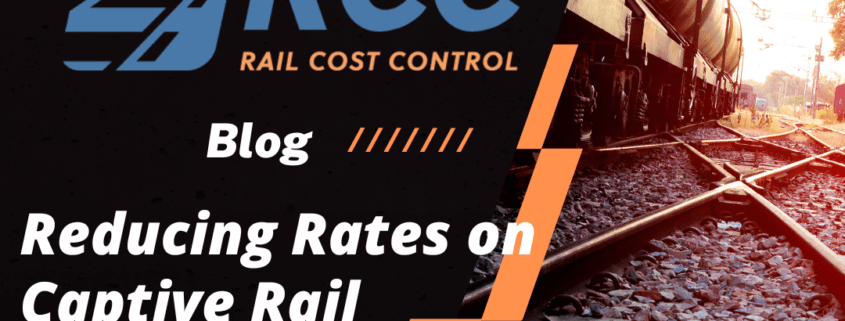Using Information Within Your Company to Reduce Captive Rail Rates
Reducing Rates on Captive Rail Movements – Part 1
Shippers need to understand everything they have to put on the table in a rail negotiation. The more a shipper knows about the overall volume his company currently ships and will ship in the future, the greater its bargaining power. The following are some examples of in-house information that can be valuable in negotiations.
The Total Inbound and Outbound Traffic the Whole Company Moves on a Specific Railroad
A shipper needs to assess the company’s total market power with a particular railroad. This is especially the case if one traffic department manages inbound traffic and another outbound traffic, if different traffic departments handle different commodities, or if suppliers handle inbound traffic. You need to know the total dollars and volume your company represents to a railroad to understand your leverage and all of the options available to help or hurt a railroad’s profitability.
The Company’s Future Plans to Increase Market Share
Data showing how rail volume is projected to increase can be helpful in demonstrating that a railroad can be more profitable by holding rates down than by increasing rates, particularly when additional sales volume will not materialize with excessive rail rates.
How Much Freight Expenses Represent to the Sales Price of Commodities
Documenting a direct connection between rail rates and sales volume can provide an incentive for a railroad to minimize rate increases. The ratio of freight expenses to sales price over time is also helpful in tying rail rates to sales volume.
Past and Current Service Problems with a Railroad
Documenting service problems can be useful in rate negotiations if the railroad’s lack of service is already creating additional expenses for a shipper. The incentive for the railroad to correct service problems is increased if the railroad receives more carloads by improving transit times. Since the number of carloads you move can have a direct effect on the railroad’s cost for a movement, improving services can lower the railroad’s cost and increase the profitability under existing rates.
How Competitive Rail Traffic on Railroads can be Increased by Changing How You Deal with Railroads Internally
There are numerous ways this can be achieved, the following are a few pertinent points for shippers to consider.
- Using Rule 11 movements vs Through movements to increase the total competitive carload volume on each railroad.
- Having railroads quote rates through multiple gateways to increase the routing and pricing options for each movement [3 pricing options, instead of 1 can be very beneficial].
- If you produce the same product at multiple plants, use geographic competition to change the status of a movement from captive to competitive.
- Determine if your customers can accept shipments by truck?
Many rail shippers don’t fare as well as they should in negotiations because their railroads know more about their business than the shippers’ transportation department. Transportation represents a big expense for most companies and every transportation department needs to be in the loop on issues related to sales volume, market share and projected plans for increasing market share. Without this information, money tends to be left on the table in rail negotiations, making it more difficult for a shipper to achieve its sales objectives and profit goals.



